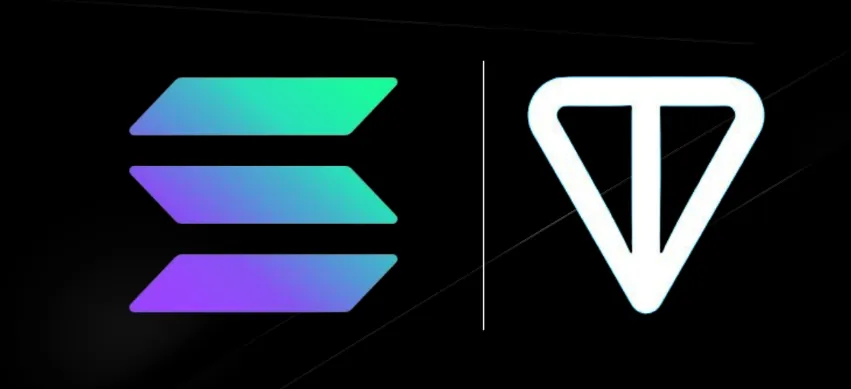TON Blockchain vs. Traditional Networks: A Comparative Analysis
Introduction
A brief overview of blockchain and traditional networks
Blockchain technologies have become the foundation of the modern approach to data processing and storage. They use a decentralized architecture in which information is stored simultaneously on multiple nodes. This approach provides high reliability, resistance to failures and protection from unauthorized access. One of the most prominent representatives of this technology is TON Blockchain, designed to improve the efficiency and security of digital transactions.
Unlike traditional networks, where data management is centered on central servers, blockchain eliminates the need for intermediaries. This ensures transparency of transactions and reduces the risk of external interference. Traditional systems, although time-tested, have limitations such as performance bottlenecks and vulnerability to attacks.
Why comparing TON with traditional systems is relevant
With the rapid growth of the digital economy and online transactions, choosing the right network is becoming strategically important. TON vs. traditional networks is a topic that allows us to evaluate which technologies are better able to cope with the challenges of today. TON offers advanced solutions for scalability, speed and security, making it a competitive alternative to traditional networks.
Comparing these technologies is relevant not only for technology companies, but also for end users who want fast, reliable and secure transactions. What is TON Blockchain? It is a next-generation network that delivers high performance and offers users innovative tools for interacting with digital assets.

Scalability and speed
TON solutions for scalability
One of the major challenges facing both blockchains and traditional networks is scalability. As the amount of data increases, many systems lose efficiency. TON Blockchain solves this problem using sharding and parallel processing technologies. These approaches allow load balancing between nodes, ensuring stable performance even under high loads.
Blockchain scalability benchmarking shows that TON can process millions of transactions simultaneously, whereas traditional networks often experience congestion due to limited resources. This characteristic makes TON an attractive choice for large corporate and financial structures.
Comparative analysis of transaction speeds
Transaction speed is a critical metric for users, especially in financial applications. TON Blockchain implements a fast consensus protocol that allows transactions to be completed in seconds. The speed and efficiency of the system ensures its superiority over traditional networks, where transactions can take from several minutes to several hours to process.
In addition, TON’s high throughput makes it ideal for transaction-intensive applications such as micropayments, decentralized applications and online commerce. In contrast, the limitations of traditional networks include delays and dependence on intermediaries, which significantly reduces their competitiveness.
Security and decentralization
Security in TON and traditional systems
Security is a key factor when choosing a network for data transmission or financial transactions. Security in TON vs. traditional systems shows that TON offers a higher level of protection. The network uses advanced cryptographic algorithms that are virtually impossible to crack. In addition, TON’s decentralized structure eliminates a single point of failure, making it more resilient to cyberattacks.
In traditional networks, by contrast, security depends on centralized servers that are often targeted by hackers. TON security minimizes these risks, making blockchain the preferred choice for those who value data protection.
Benefits of decentralization
One of the most significant benefits of TON is its decentralized architecture. Decentralization benefits include eliminating the need for intermediaries, which reduces costs and increases transparency. Users have full control over their data and transactions, which is especially important in an era of increasing demand for privacy.
Traditional networks, on the other hand, depend on centralized management, which can be less reliable due to the risk of human error and technical failures. This makes TON a more efficient and secure solution for a wide range of applications.

How TON enhances security
The issue of security plays a key role in today’s digital systems. TON Blockchain offers innovative solutions that are far superior to traditional centralized networks. Through the use of cryptographic protocols and decentralized architecture, ton security protects data from unauthorized access and cyberattacks.
In addition, smart contracts on the TON platform minimize the human factor by automating operations and eliminating the possibility of manipulation. Security in TON vs. traditional systems clearly shows that blockchain systems such as TON are more resilient to external threats compared to centralized platforms.
Limitations of traditional centralized networks
Limitations of traditional networks lie in their dependence on centralized servers and data storage. This makes such systems vulnerable to attack, especially if the main server is compromised. In addition, centralized networks often face scalability and slow speed issues, which degrade their overall performance.
In comparison, what is TON Blockchain? It is a decentralized platform where every node in the network participates in data processing and verification. This eliminates single points of failure and makes the system more reliable.
Conclusion: The Future of TON
The comparison of TON vs. traditional networks demonstrates that TON is far superior to traditional systems in the aspects of security, decentralization and efficiency. In addition, Blockchain scalability comparison shows that TON is able to handle many more transactions due to its technical innovations.
Today’s challenges in security, speed and decentralization require new approaches, and TON already offers solutions that meet these requirements. TON’s future prospects are linked to its ability to become a key player in creating decentralized digital ecosystems, opening new horizons for technology.